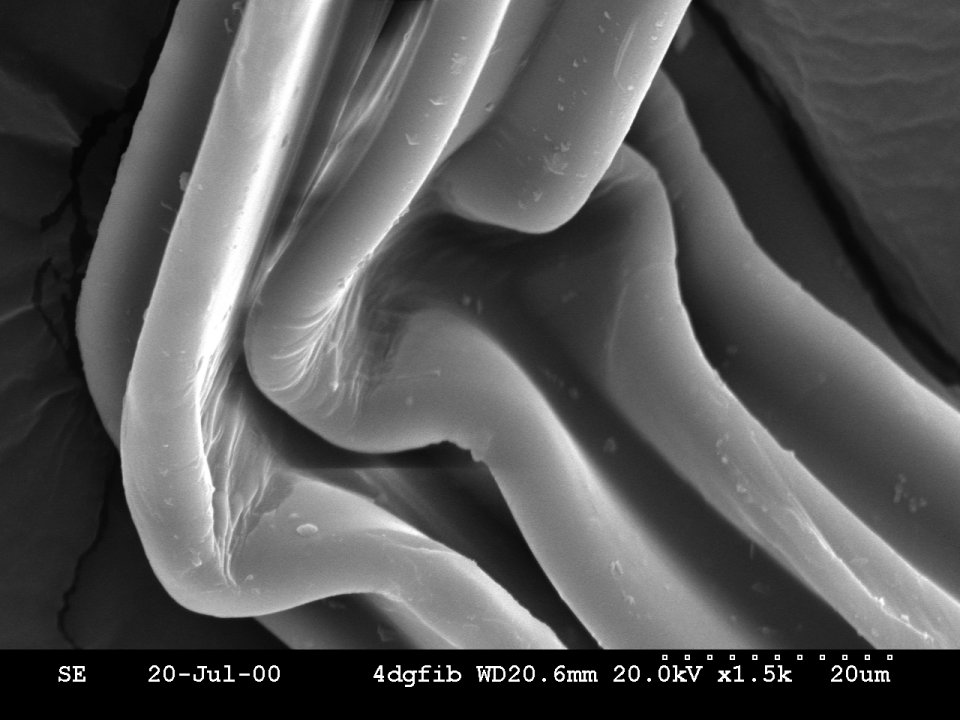
Microplastics in four rivers – Image. “Microplastics in freshwater ecosystems: what we know and what we need to know.” by Martin Wagner, et al., Environmental Sciences Europe. 26, 2014. doi: 10:1186/s12302-014-0012.7
Did you know that 35% of the plastic in our water is microfibers? Those microfibers come from our clothing, released into the water supply during laundering. Microfibers are too small (0.5mm) to be captured by traditional filters. Currently, 2/3rds of clothing contains some percentage of synthetic materials. A typical washload of polyester clothing may shed 9,000,000 microfibres with every wash. Now there is something we can do to stop this problem: attaching a filter to washing machines to catch the microfibers. While the origin of microfibers in clothing is the garment industry, a major source of plastic microfibers is the effluence of laundry water. PlanetCare is expanding their product to a larger version for commercial laundries.

“SEM picture of a bend in a high-surface area polyester fiber with a seven-lobed cross section” by Pschemp, 2000. Image Wikimedia.
Other companies are developing microfiber filters for washing machines. Environmental Enhancements offers the Lint LUV-R. Xeros Technologies produces the XFiltra. Filtrol makes a similar product. Cora Ball and Guppyfriend use a different technology: devices that collect microfibers inside the washing machine during the laundry cycle. While attached filters catch more fibers (87%), these tend to be the longest ones; Cora Ball inserts and Guppyfriend washing bags capture 26%, mainly the smallest fibers. Using both approaches would increase success.
Fast Company “G-Star Raw x Planetcare collab to flight microfibre pollution.” 8 October 2019. https://www.fastcompany.co.za/business/g-star-raw-x-planetcare-collab-to-fight-microfibre-pollution
Kart, Jeff. “Science says laundry balls and filters are effective in keeping microfibers out of waterways.” 2019. Forbes.https://www.forbes.com/sites/jeffkart/2019/02/01/science-says-laundry-balls-and-filters-are-effective-in-removing-microfibers/?sh=208899e6e07a
Rabinovich, Ben. “World Oceans Day: Check out these amazing inventions currently cleaning our oceans.” 4 June 2019. Daily Mail. https://www.dailymail.co.uk/sciencetech/article-7104173/World-Oceans-Day-Check-amazing-inventions-currently-cleaning-oceans.html
Tuttan, Mark and Katie Pisa. “Washing your clothes is causing plastic pollution, but a simple filter could help.” 14 November 2019. CNN. https://www.cnn.com/2019/11/14/world/microfiber-filter-plastic-pollution-int/index.html
Zupan, Mojca. 2019 YouTube: https://www.youtube.com/watch?v=AD7iTYhAC_U
Building the World Blog by Kathleen Lusk Brooke and Zoe G. Quinn is licensed under a Creative Commons Attribution-NonCommercial-NoDerivs 3.0 Unp

